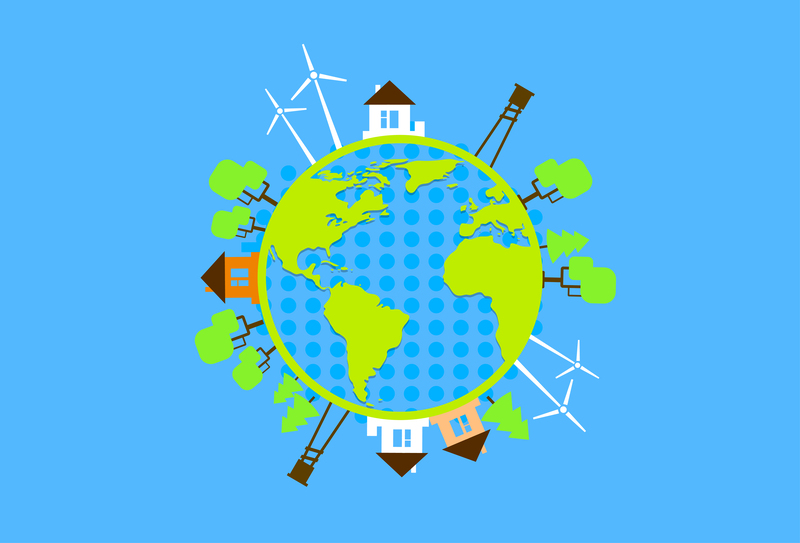Uncovering Plastics You Should Avoid
Plastics have become inseparable from our daily lives, but not all plastics are created equal. Some plastic materials carry potential health and environmental risks that far outweigh their convenience. In this in-depth exploration, we'll uncover the plastics you should avoid, explain why they're problematic, and offer practical guidance for safer alternatives.

Understanding the Risks of Common Plastics
Plastics are categorized by their resin identification code--a number (1-7) usually found inside the recycling triangle. Each type has unique characteristics, uses, and risks. While certain plastics are generally considered safe, others are linked to chemical leaching, environmental pollution, and health concerns. If you're looking to lead a healthier, more eco-conscious lifestyle, it's essential to recognize and avoid the riskiest plastic types.
What Makes Certain Plastics Harmful?
Some plastics are engineered with additives and chemicals that enhance their flexibility, durability, and clarity. Unfortunately, these same compounds can migrate into food, drinks, and the environment, sometimes with toxic consequences. Frequent concerns include:
- BPA (Bisphenol A): Known to act as an endocrine disruptor, mimicking hormones and potentially causing a range of health problems.
- Phthalates: Used to soften plastics, these chemicals may interfere with hormone function and developmental processes.
- Styrene: A probable human carcinogen used in certain plastics and foams.
- Dioxins: Toxic chemicals released when certain plastics are burned or degraded.
Knowing which plastics to avoid can help you limit your exposure to these chemicals and reduce your environmental footprint.
Examining the Plastic Resins: The Numbers Explained
Let's break down the seven main types of plastic, with an emphasis on those you should avoid. Each resin identification code gives a clue about the chemical composition and potential hazards.
Plastic #1: PET or PETE (Polyethylene Terephthalate)
- Common uses: Water and soda bottles, food jars, condiment containers.
- Why avoid? While considered safe for single use, #1 plastics can leach antimony, especially when reused or exposed to heat. Repeated use and improper cleaning can cause bacteria build-up as well as chemical leaching. Avoid reusing or heating these containers.
Plastic #2: HDPE (High-Density Polyethylene)
- Common uses: Milk jugs, detergent bottles, juice containers, grocery bags.
- Why avoid? Generally regarded as a safe plastic, but HDPE can still absorb and retain substances. If exposed to high heat or harsh conditions, chemical migration is possible.
Plastic #3: PVC (Polyvinyl Chloride) - One to Steer Clear Of
- Common uses: Food wraps (cling film), plumbing pipes, shower curtains, inflatable products, toys.
- Hazards: PVC is one of the most harmful plastics due to the presence of phthalates, lead, and other additives. It can leach toxins during use and when incinerated, releasing dioxins--a group of highly toxic chemicals linked to cancer and reproductive issues.
- Advice: Avoid using PVC for food storage or children's toys. Opt for phthalate-free, PVC-free replacements.
Plastic #4: LDPE (Low-Density Polyethylene)
- Common uses: Bread bags, frozen food bags, squeezable bottles, some cling wraps.
- Hazards: While LDPE is one of the safer plastics in terms of chemical leaching, it is not widely recyclable and contributes significantly to environmental pollution.
- Advice: For sustainability, seek alternatives when possible, such as reusable fabric bags.
Plastic #5: PP (Polypropylene)
- Common uses: Yogurt cups, straws, bottle caps, microwave-safe containers, some takeout food containers.
- Why avoid? Polypropylene is heat-resistant and relatively safe, but its widespread use contributes to plastic waste. Microwave use may still present a risk if the plastic warps or melts.
Plastic #6: PS (Polystyrene) - A Plastic to Avoid
- Common uses: Disposable coffee cups, takeout containers, packing peanuts, cutlery.
- Hazards: Polystyrene can leach styrene, a suspected carcinogen, especially when heated. It's also a major source of litter, difficult to recycle, and often ends up polluting oceans and harming wildlife.
- Advice: Avoid using polystyrene, especially for hot food and drinks. Consider reusable mugs and biodegradable food containers.
Plastic #7: Other (Often Polycarbonate, BPA-containing) - The Most Dangerous
- Common uses: Baby bottles, reusable water bottles, food storage containers, eyeglasses, electronics.
- Hazards: This category includes plastics made with Bisphenol A (BPA) and other potentially hazardous compounds. BPA is well-known for mimicking estrogen in the body, disrupting endocrine functions, and being associated with reproductive disorders, cancer, and developmental problems.
- Advice: Always avoid plastics marked "#7" unless specifically labelled BPA-free and made from safer materials like PLA (polylactic acid).
Detailed Guide: Plastics to Avoid in Daily Life
1. Steer Clear of Food and Beverage Plastics with Risks
- Do not reuse single-use PET (#1) bottles. Over time, they can leach antimony and harbor bacterial growth.
- Never microwave or pour hot food into polystyrene (#6) or PVC (#3) containers. Heat accelerates chemical migration into food.
- Choose glass, stainless steel, or certified BPA/BPS-free plastics for food storage and drinking containers.
2. Understand Which Children's Products Contain Problem Plastics
- Avoid PVC (#3) kids' toys, teething rings, and baby bottles. Babies are especially vulnerable to hormone-disrupting chemicals.
- Look for labels indicating "phthalate-free," "BPA-free," or "PVC-free" products.
3. Skip Disposable Tableware and Packaging
- Say no to foam polystyrene (#6) cups, trays, and takeout boxes. Bring your own reusable alternatives when possible.
- Choose compostable or paper-based packaging for picnics and parties.
Why Are These Toxic Plastics Still Widely Used?
Plastics such as PVC, polystyrene, and BPA-containing polycarbonate offer manufacturers low cost, flexibility, and mass-market appeal. Their convenience for food packaging, medical devices, and everyday items keeps them entrenched in the market. Regulatory gaps and resistance to change can slow the shift toward safer materials. However, consumer awareness and demand for alternatives are driving more companies to innovate and transition away from harmful plastics.
How to Identify Safer Plastics at a Glance
Understanding resin codes is the first defense against accidental use of plastics you should avoid. Here's how you can quickly determine what's safe:
- #2 (HDPE) and #5 (PP) are generally considered safer for food and drink.
- Avoid #3 (PVC), #6 (PS), and #7 (Other/Polycarbonate with BPA).
- Check for "BPA Free" or "Phthalate Free" labels particularly for children's products and food containers.
Health Impact of Avoiding Hazardous Plastics
Research suggests many of the chemicals used in risky plastics can:
- Disrupt hormonal balance, affecting fertility, puberty, and metabolic health.
- Increase risk for certain cancers, notably breast and prostate cancer.
- Impact neurological development in children, leading to learning and behavioral issues.
- Cause adverse effects on immune system function and cardiovascular health.
By consciously choosing safer plastic types or alternative materials, you can proactively reduce your risk of exposure to harmful chemicals.
Eco-Friendly and Health-Conscious Alternatives
There is no shortage of safer options for those seeking to avoid problematic plastics. Consider these substitutions for a healthier, greener lifestyle:
- Glass containers: Non-reactive and long-lasting for food storage and beverages.
- Stainless steel water bottles and lunchboxes: Durable, safe, and reusable for years.
- Plant-based bioplastics (PLA): Look for certified compostable products when single use is unavoidable.
- Fabric shopping bags: Replace LDPE plastic bags with sturdy reusable options.
- Beeswax wraps: An eco-friendly, non-toxic substitute for plastic cling film.
- Silicone bakeware and pouches: Food-safe and heat-resistant, but choose brands that avoid filler materials.

Tips to Reduce Your Plastic Exposure and Footprint
Making a shift away from plastics to avoid may require small but consistent changes. Here's how you can simplify the transition:
- Inspect resin codes before purchasing or reusing plastics.
- Do not heat food in plastic containers; instead, use ceramic or glass in the microwave.
- Reduce your reliance on disposable plastics altogether--carry reusable water bottles and bags.
- Avoid canned foods where possible, as cans may be lined with BPA-containing epoxy.
- Advocate for less plastic packaging at your local stores and markets.
Conclusion: Choosing to Avoid Harmful Plastics for a Safer, Healthier Life
A world without plastics is nearly unimaginable, but avoiding the most toxic plastics is a realistic and impactful goal. By distinguishing which types pose a threat--especially PVC (#3), polystyrene (#6), and polycarbonate/BPA plastics (#7)--you can safeguard both your health and the environment.
The next time you shop for household items, kids' toys, or food containers, pause to check the resin code and seek out safer or plastic-free alternatives. Your informed choices contribute to a cleaner planet and a healthier family.
Uncovering plastics you should avoid is more than an exercise in label reading; it's a step toward a more sustainable, toxin-free future. Start making these changes today and inspire others to join the movement away from hazardous plastics.